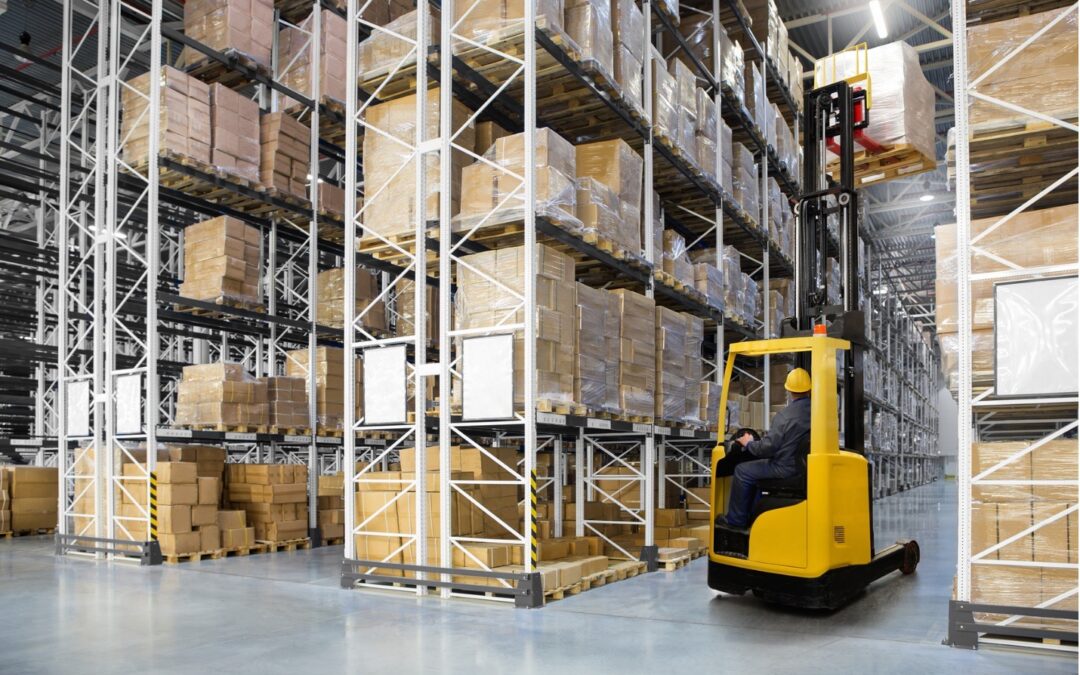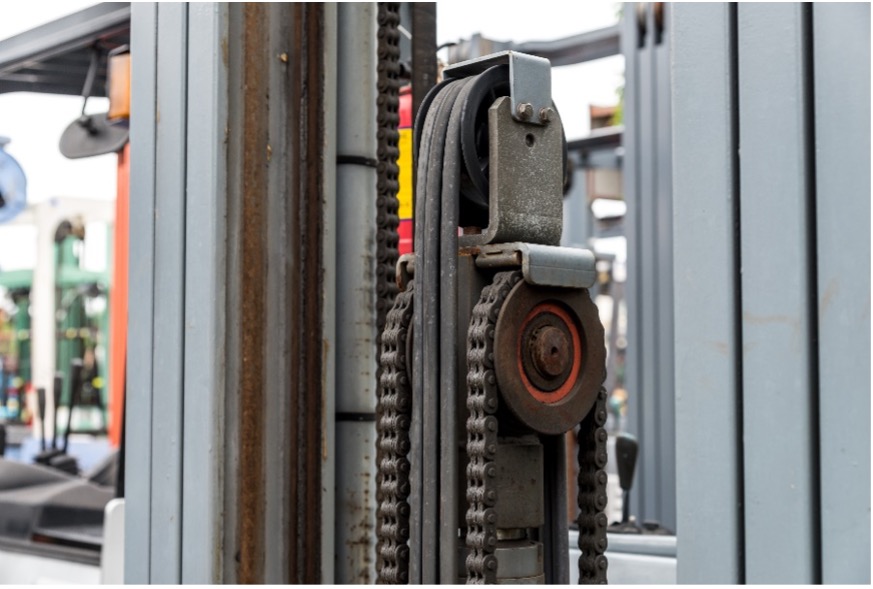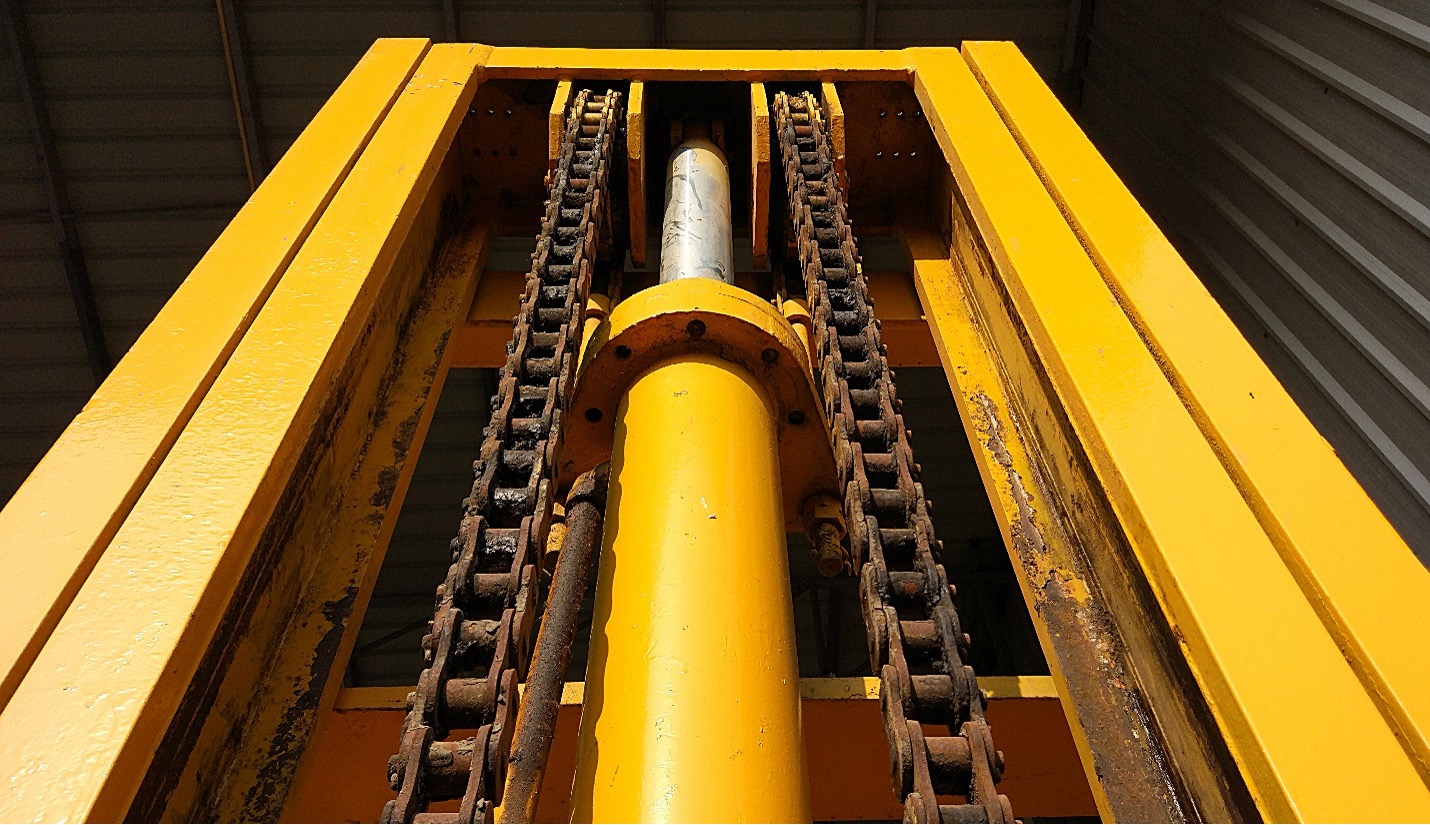This makes it extremely important to not only have a good system in place to move materials efficiently, but to also have quality, dependable equipment to get the job done. One of the most important pieces of equipment used to move materials in a wide range of settings from factories and warehouses to retail stores is the forklift.
Forklifts are used for material movement across many industries and are crucial for completing important operations within a business. Larger companies have entire fleets of forklifts that they depend on daily to ensure maximum efficiency of their material movement.
Forklifts are complex pieces of equipment that are made up of many component parts and these forklift components are themselves made up of parts such as bearings, chains, and sprockets.
Mechanical Power helps you take the hassle out of global sourcing, we help supply industrial products, such as those in a forklift, for OEM manufacturers across the Midwest.
We source a variety of forklift parts and components through our material movement product sourcing services, including gears and sprockets, bearings, pulleys, chains, and clutch assembly parts, to help you keep your forklift fleet operating smoothly and efficiently.
It is very important for forklift operators, supervisors, and even business owners to be familiar with the various components and parts of a forklift. This guide explains the different forklift components, including the purpose of each and how they operate.
Forklift Truck Frame
The truck frame of a forklift is like the chassis of a car, it is the metal frame that many of the major forklift components are attached to including the wheels and axels, engine, mast, counterweight, and overhead guard. In some forklifts, tanks for fuel or hydraulic fluids are built into the truck frame.
Counterweight
The counterweight is a weight on the back end of the forklift installed into the truck frame. Its purpose is to counterbalance the weight of the load lifted or carried by the forklift to keep it stable and prevent tipping.
The counterweight is designed only to counterbalance the intended maximum carrying capacity. It is important for forklift operators to know the maximum carrying capacity to prevent serious accidents.
Operator Cab
The operator cab is the area where the forklift driver sits to operate the equipment. The cabs generally include the steering wheel, brake and acceleration pedals, levers to control the forks and the mast, and a dashboard with gauges.
In some forklifts, the cab will have a seat for the operator while others are designed for the operator to stand. The steering system within a forklift typically uses a hydraulic steering cylinder and turns the rear axel while pivoting on the front tires.
The levers that are found in operator cabs typically include:
- Tilt lever: used to adjust the angle of the forks.
- Lift lever: used to lift the forks up and down.
- Side shift lever: used to move the carriage horizontally.
The overhead guard is an extension of the operator cab that supports a metal roof over the head of the operator. On some forklifts, the cabs may be enclosed and include heating and cooling.
Power Source
Forklifts have two main power sources: an internal combustion engine or in the case of electric forklifts, an electric motor powered by a battery or fuel cells. Forklifts with internal combustion engines can run on gasoline, LP gas, CNG, or diesel fuel.
These engines are similar to combustion engines in cars, injecting liquid fuel and air into a cylinder with a piston that is powered by a crankshaft. A spark plug initiates the explosion that pushes the piston down in the cylinder, and the downward energy is converted into mechanical energy to power the forklift.
Forklift combustion engines are made up of many internal components, including chains, gears and bearings that keep it functioning properly.
Forklift Mast
The forklift mast is responsible for the main function of the forklift. It is the vertical assembly in the front of the forklift made up of interlocking rails that lift the forks and carriage with the load.
These rails are powered by at least one hydraulic cylinder either directly or with chains driven by the cylinders. Typically, forklift masts consist of lift and tilt cylinders:
- Lift cylinder: The lift cylinder is the hydraulic cylinder that lifts the forks and the carriage up and down.
- Tilt cylinder: The tilt cylinder controls the tilt of the carriage as well as the angle of the forks.
It is possible for forklift masts to include multiple stages that will increase its lift height and weight capacity. They are typically available as duplex masts, triplex masts, or quad masts which feature two, three, and four mast stages respectively.
Carriage
The carriage is an important part of the mast that is used to lift and stabilize the load. The forks and load backrest are generally considered parts of the carriage:
- Forks: The forks are the protruding pieces of metal at the bottom of the carriage that are used to lift the load from the bottom. They come in a range of widths, lengths, and sizes to suit different purposes.
- Load backrest: This is the flat surface along the back of the carriage that helps to support the load. Operators can rest the load against the backrest, and the backrest also prevents the load from sliding back into the operator.
Forklift Tires
Forklift tires are important for providing the traction needed to move the forklift safely and efficiently. There are several types of forklift tires available, and forklifts may have different tire layouts. While most forklifts have four wheels, there are some that are used indoors that have three-wheel layouts that can maneuver in limited space.
Generally, forklift tires are one of the following two types:
- Cushion tires: These tires are used indoors on smooth, flat surfaces because they have low traction. They are ideal for working environments that require a small turning radius and they are easy to maintain and relatively inexpensive.
- Pneumatic Tires: These tires are better suited for outdoor environments because they have the traction to handle rough and uneven surfaces. There are pneumatic tires that inflate with air, and pneumatic tires made from solid rubber.
Forklift Attachments
Forklift attachments are additional attachments that can be installed permanently or temporarily to the carriage. Many of these attachments allow for extra capability or support for large, heavy, or unconventional loads.
There are many different types of forklift attachments available including dimensioning devices, sideshifters, fork positioners, rotators, pole attachments, clamp attachments, scales, snow plows, drum handler attachments, and telescopic forks.
Global Sourcing of Forklift Parts
Finding a Quality Component Supplier
Each of the main forklift components described above is important for the function and operation of a forklift fleet. If your forklifts aren’t supplied with quality components and parts, there is a much higher probability of equipment failure.
Mechanical Power has the right relationships with the right manufacturers to always bring you the highest quality components and parts. With the right components sourced by a trusted company, the forklift and warehouse equipment you offer will be safely operational and up and running for many years to come.
At Mechanical Power, we understand how important it is to ensure long-lasting, quality components for your forklifts to keep them working properly so your material movement operations run smoothly. The parts within many of these forklift components, including bearings, chains, gears, and pulleys may be difficult to find for your specific equipment.
However, you can rely on our experts at Mechanical Power to source any of the parts you need for your forklift, whether you need a gear for a new engine design, a chain for the mast, or bearings for the wheels or steering system.
We have built professional relationships with the world’s top suppliers & manufacturers to provide warehouse equipment product sourcing you can trust. We will save your company time and money navigating between the different manufacturers and procure quality parts for your forklift fleet.
Contact Mechanical Power to learn more about our material movement product sourcing services. Mechanical Power is a professional supplier of forklift components and parts serving the Midwest including Chicago, IL and surrounding states.

Resourceful and innovative Marketing Pro, with 20+ years of progressive experience in the marketing and creative technology industry. Responsible for digital and traditional marketing efforts that promotes brand awareness, increases engagement, and drives revenue.





















